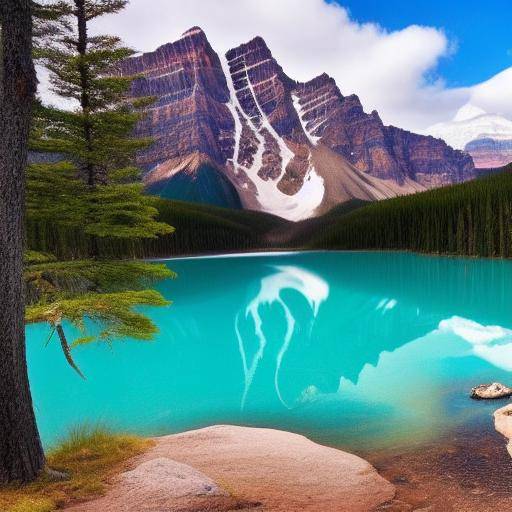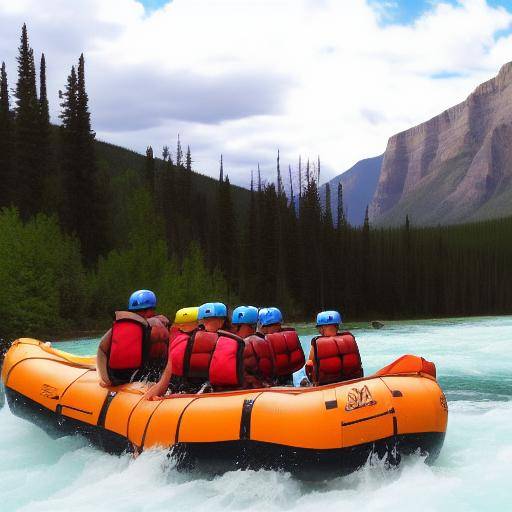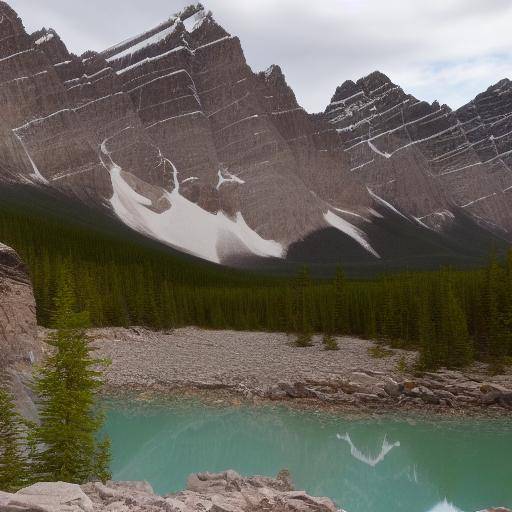
The Banff National Park, located in the majestic Canadian Rocky Mountains, is a natural destination of exceptional beauty. From alpine landscapes to turquoise lakes, this park offers a unique experience. This article will immerse you in the history, natural beauty and highlights of Banff National Park, giving you relevant information to plan an exciting visit.
Introduction
The Banff National Park, located in the province of Alberta, Canada, is renowned for its stunning natural setting. From its high peaks to its deep valleys, the park hosts a diversity of flora and fauna that makes it a place of incomparable beauty. In addition, its picturesque alpine lakes, such as Lake Moraine and Lake Louise, attract visitors from around the world. This article will guide you through the history, importance and unique experience offered by Banff National Park.
History and Background
Origins and Evolution of the Park
Banff National Park has a rich history dating back to its establishment in 1885, becoming Canada's first national park and one of the world's first national parks. Since then, it has been a protected area to preserve the natural beauty of the Rocky Mountains and has been recognized as a World Heritage Site by UNESCO.
Development and Historical Significance
Over the years, the park has witnessed important historical milestones, from the construction of the Trans-Canadian road to the promotion of sustainable tourism. It has also played a crucial role in the conservation of endangered species and in the preservation of fragile ecosystems.
Detailed Analysis
The preservation of Banff National Park has been a topic of thorough discussion and study. Research has been carried out that reveals the importance of maintaining the ecological integrity of the park, while promoting ecotourism as a tool for conservation.
Analysis in Deep
Benefits and Challenges of the Park
The Banff National Park offers visitors the opportunity to connect with nature, enjoy panoramic views and participate in a variety of outdoor activities. However, the management of the influx of tourists and the protection of fauna and flora are crucial aspects that require continuous attention.
Current Experiences and Trends
The popularity of Banff National Park has been increasing, leading to the implementation of measures to ensure its long-term preservation. The promotion of responsible tourism and the development of sustainable infrastructures are current trends that seek to balance conservation with visitor experience.
Comprehensive review
The park offers unique experiences, from wildlife sighting to the practice of hiking and photography of spectacular landscapes. At the same time, challenges arise in terms of conservation and preservation of the natural environment.
Comparative analysis
Banff, Canada and Alpine Lakes
Banff National Park is a symbol of Canadian natural beauty, with its alpine lakes as outstanding features. Compared to other alpine destinations in the world, Banff is distinguished by its diversity of ecosystems and its commitment to conservation.
Similarities and Variances
Compared to other national parks or protected areas in Canada, Banff National Park stands out for its crystal clear lakes and its unique fauna. Differences in geography and climate also distinguish it from other alpine destinations in the world.
Practical Tips and Recommendations
Planning of the Visit
When visiting Banff National Park, it is essential to have a well-structured plan that includes the reservation of accommodation in advance, the choice of appropriate hiking routes and the consideration of environmental preservation measures.
Care of the Natural Environment
During the visit, it is essential to follow the standards of conduct in natural areas, such as respect for wildlife, garbage collection and responsible use of trails. In this way, it helps to maintain the natural beauty of the park for future generations.
Recommended activities
The Banff National Park offers a wide range of activities, such as kayak tours through the alpine lakes, bear sighting and guided tours by conservation experts. These activities provide a unique opportunity to explore and learn about this unique natural environment.
Conclusions and FAQs
Final Conclusions
Banff National Park is much more than a tourist destination; it is a place of historical and ecological importance that deserves to be preserved for future generations. Its scenic beauty and varied outdoor experiences make it an incomparable destination in the world.
Frequently asked questions
1. What is the best time of the year to visit Banff National Park?
The summer season, from June to August, offers pleasant temperatures and full access to trails and lakes. However, winter is also impressive for winter sports enthusiasts.
2. Is there a special permit required to visit the park?
No special permission is required for access to Banff National Park, but entrance fees must be paid, which help finance the conservation of the protected area.
3. What are the security measures to consider during the visit to the park?
It is important to be prepared for sudden climate change, to bring adequate food and to respect the rules of coexistence with wildlife.
External Links of Interest
- Official page of Banff National Park
- Tourist information about Canada
- Banff Museum and Cultural Centre
Concluding, the Banff National Park is a natural gem that embodies the majesty of the Canadian Rocky Mountains. From its rich history to its stunning natural beauty, this destination offers a truly unforgettable experience. With appropriate conservation measures, you will be able to continue captivating future generations with their unique natural splendor and dreamy alpine lakes. Adventure and discover the majesty of Banff National Park in Canada!
Always remember to visit official sources to get up-to-date information about Banff National Park and Canada!



